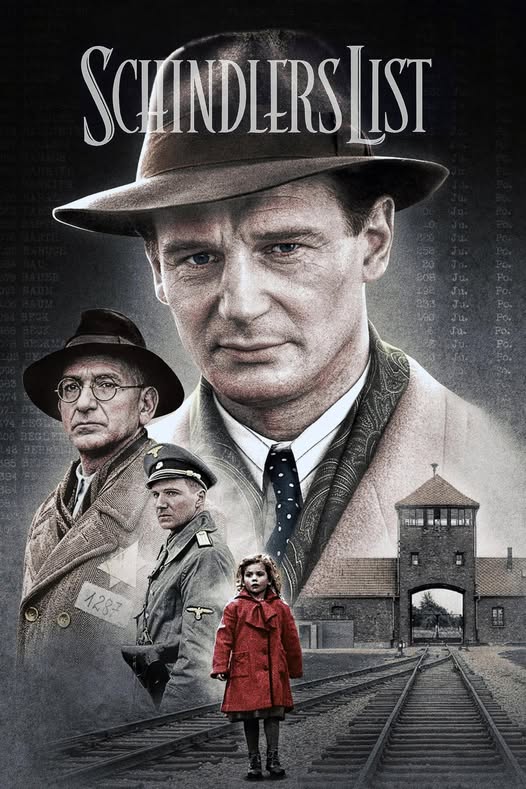Schindler’s List (1993)

Schindler’s List continues to inspire discussions about humanity, morality, and the power of individual action. It serves as a reminder of the atrocities of the past and the importance of remembering history to prevent future horrors. The film’s enduring relevance is underscored by its inclusion in various educational curricula and its recognition as one of the greatest films ever made.
Schindler’s List is not only a narrative triumph but also a technical masterpiece. Shot in stark black and white by cinematographer Janusz Kamiński, the film creates a hauntingly realistic atmosphere that immerses viewers in the somber realities of the Holocaust. The strategic use of color, particularly the iconic red coat of a little girl, serves as a powerful symbol amidst the bleakness, reminding viewers of the innocence lost during this tragedy.
The strategic use of color, particularly the iconic red coat of a little girl, serves as a powerful symbol amidst the bleakness, reminding viewers of the innocence lost during this tragedy.
The film’s score, composed by the legendary John Williams, adds emotional depth, enhancing the narrative’s poignancy and gravity. The combination of visuals and music culminates in a haunting experience that resonates long after the credits roll.











